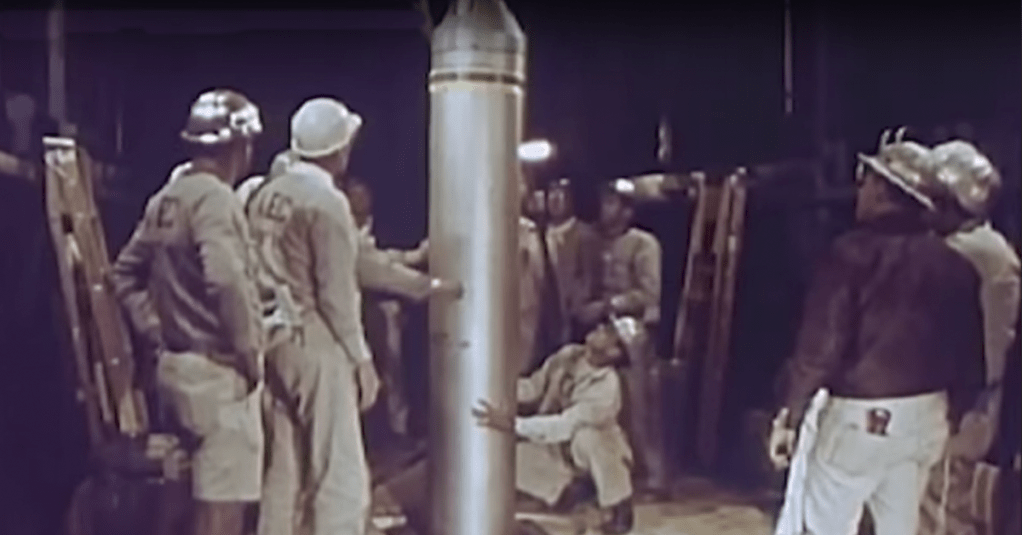

When Egypt nationalized the Suez Canal in 1956, there were talks of creating a secondary canal. As U.S. and British officials were considering how it could be built, someone in the room must have said something along the lines of, “Why not nukes?”
No matter how it went down, something sparked the testing of Peaceful Nuclear Explosions (PNEs) and Operation Plowshare.
The codename “Operation Plowshare” comes from Isaiah 2:4: “And he shall judge among the nations, and shall rebuke many people: and they shall beat their swords into plowshares, and their spears into pruning hooks: nation shall not lift up sword against nation, neither shall they learn war any more.”

The Suez Crisis ended after nine days and plans for a second canal were abandoned, but the idea of using nuclear warheads for non-military purposes stuck.
Between 1961 and 1973, twenty seven nuclear detonations were used for various purposes. Experiments were done to see if detonations could stimulate the flow of natural gas. They also helped with excavation for aquifers, highways, more canals, and an artificial harbor in Cape Thompson, Alaska, under Project Chariot.
Project Chariot was the most ambitious out of all of the tests. The idea was to detonate five hydrogen bombs to give the population of just over 320 a harbor. It was ultimately scraped — the severe risk and expense couldn’t be justified for how little potential it offered.
The United States didn’t followed through with any of the testing of PNEs, but they weren’t the only nation who played with nuclear experiments. The Soviet Union had their own version in the “Nuclear Explosions for the National Economy.”
The Soviets performed 239 tests between 1965 and 1988. One of the few tests that yielded positive results was the Chagan nuclear test (which created a 100,000 m3 lake that’s still radioactive to this day). Another was the sealing of the Urtabulak gas well that had been blowing for three years.
This was later cited as a possible alternative to sealing the Deepwater Horizon oil spill.

Peaceful Nuclear Explosions were regulated in 1974 by President Gerald R. Ford and then banned entirely by the multilateral Comprehensive Nuclear-Test-Ban Treaty in 1996 by the United Nations. This treaty prohibits all nuclear explosions, peaceful or not.
Nuclear energy is still being researched, however, most notably in nuclear pulse propulsion for spacecrafts.
Check out the video below to learn more about Plowshare in a (very campy by today standards) 1960’s atomic science educational film.
(YouTube, Tomorrow Always Comes)
